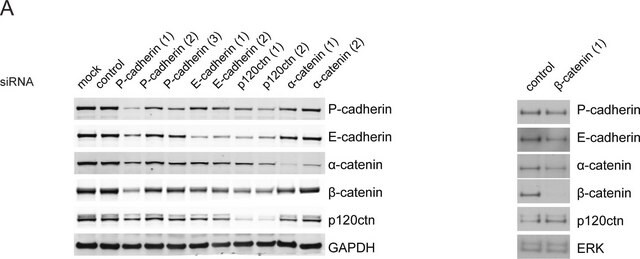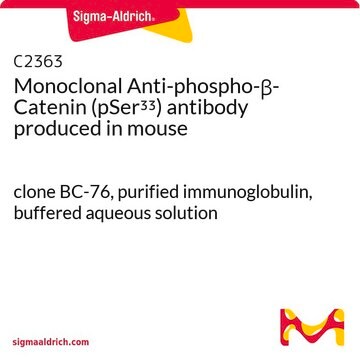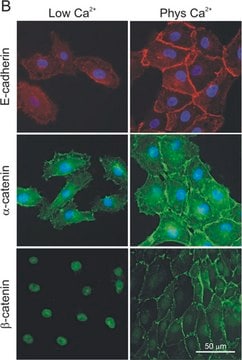C4231
Anti-phospho-β-Catenin (pSer33/pSer37) antibody, Mouse monoclonal
clone BC-22, purified from hybridoma cell culture
Sinónimos:
Anti-CTNNB, Anti-EVR7, Anti-MRD19, Anti-NEDSDV, Anti-armadillo
About This Item
Productos recomendados
biological source
mouse
conjugate
unconjugated
antibody form
purified immunoglobulin
antibody product type
primary antibodies
clone
BC-22, monoclonal
form
buffered aqueous solution
mol wt
antigen ~94 kDa
species reactivity
mouse, human, rat, chicken
concentration
~2 mg/mL
technique(s)
indirect ELISA: suitable
microarray: suitable
western blot: 5-10 μg/mL using whole cell extract of cultured human 293 cells treated with proteasome inhibitor MG132
isotype
IgG2b
UniProt accession no.
shipped in
dry ice
storage temp.
−20°C
target post-translational modification
phosphorylation (pSer33/pSer37)
Gene Information
human ... CTNNB1(1499)
mouse ... Ctnnb1(12387)
rat ... Ctnnb1(84353)
General description
Specificity
Immunogen
Application
- indirect ELISA
- microarray
- western blot at a dilution of 5-10μg/mL using whole cell extract of cultured human 293 cells treated with proteasome inhibitor MG132.
Biochem/physiol Actions
In Wnt/β-catenin signal pathway β-Catenin participates as a signal transduction molecule. The pathway is associated with development, tissue homeostasis and oncogenic transcription. Upregulation of the gene is associated with glioma cell proliferation. The protein encoded has dual function that regulates the coordination of cell-cell adhesion by linking cytoskeleton and cellular junctions and gene transcription. Wnt/β-catenin signal pathway is known to induce progression colon cancer progression.
Physical form
Disclaimer
Not finding the right product?
Try our Herramienta de selección de productos.
Storage Class
10 - Combustible liquids
wgk_germany
nwg
flash_point_f
Not applicable
flash_point_c
Not applicable
Certificados de análisis (COA)
Busque Certificados de análisis (COA) introduciendo el número de lote del producto. Los números de lote se encuentran en la etiqueta del producto después de las palabras «Lot» o «Batch»
¿Ya tiene este producto?
Encuentre la documentación para los productos que ha comprado recientemente en la Biblioteca de documentos.
Nuestro equipo de científicos tiene experiencia en todas las áreas de investigación: Ciencias de la vida, Ciencia de los materiales, Síntesis química, Cromatografía, Analítica y muchas otras.
Póngase en contacto con el Servicio técnico








